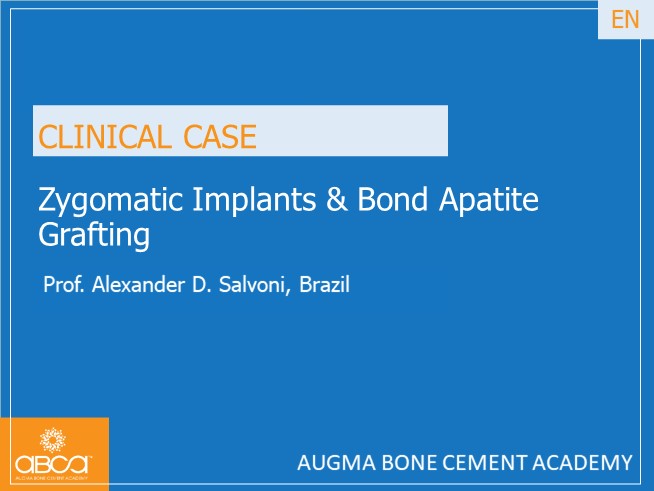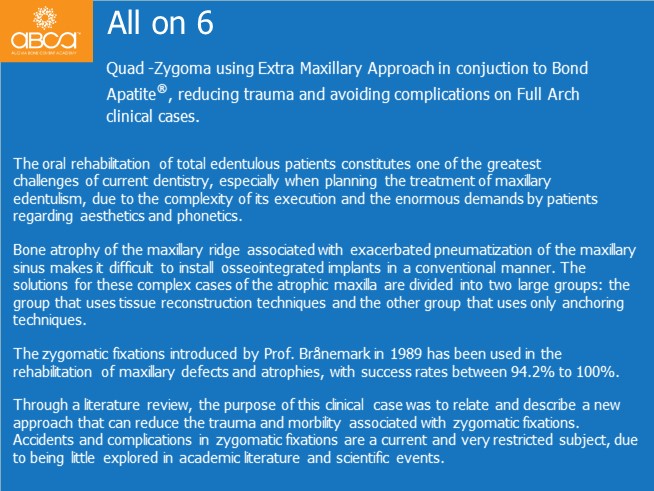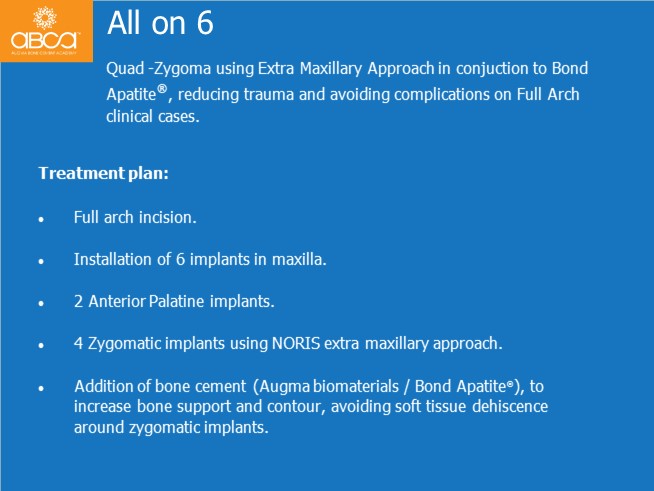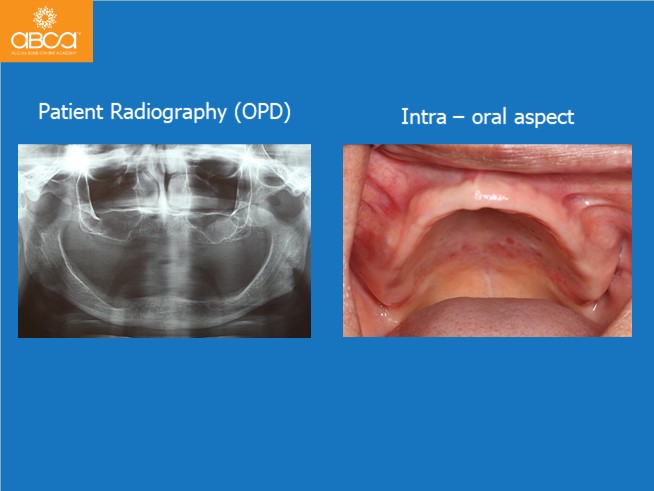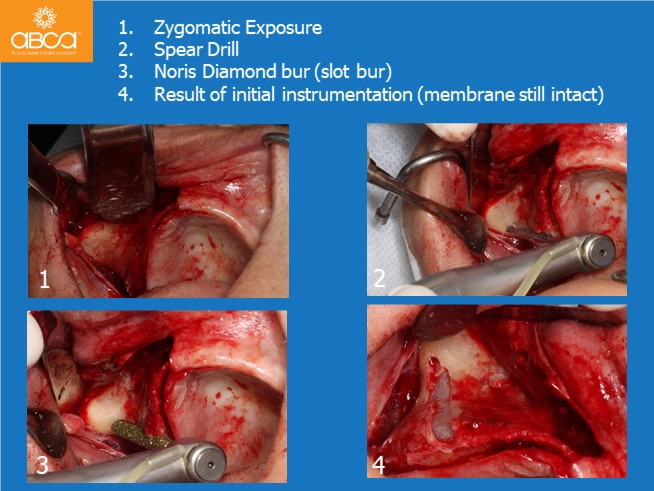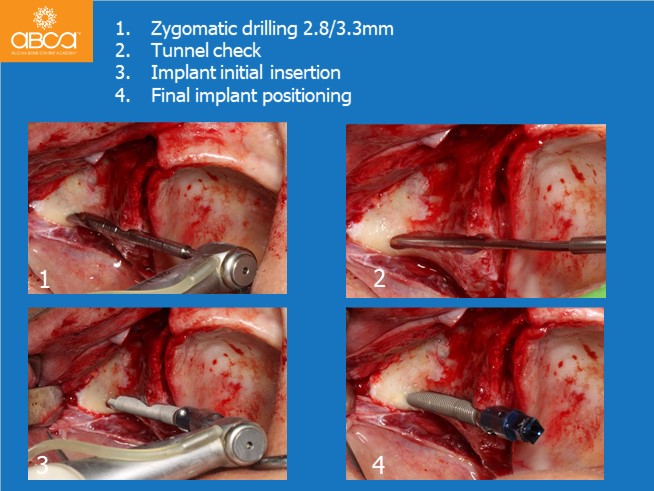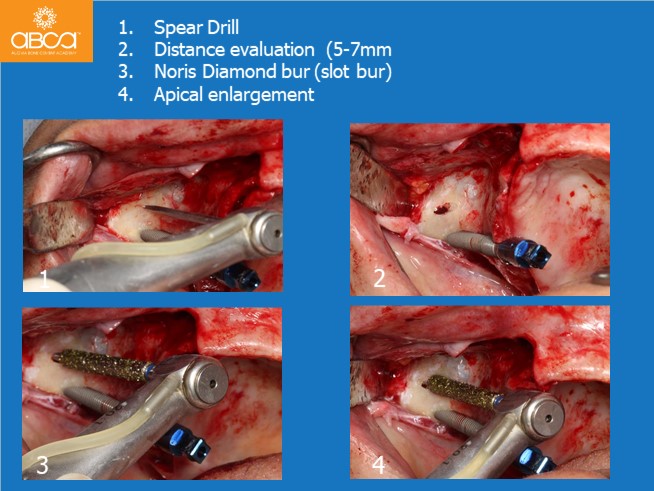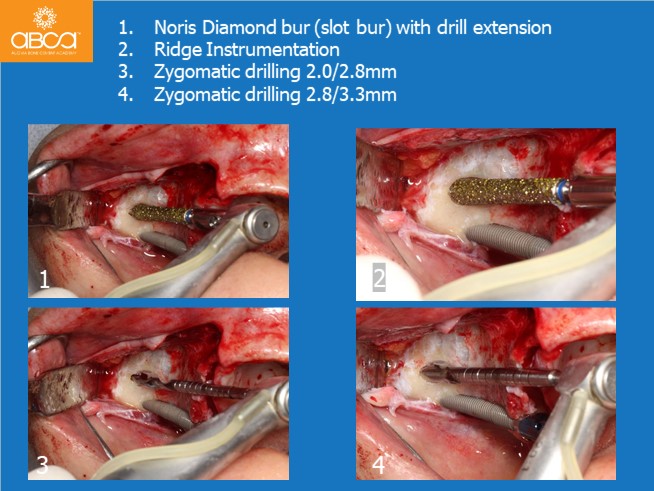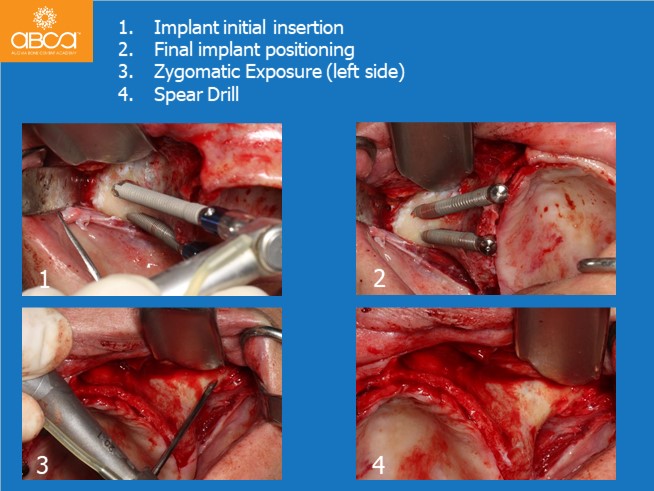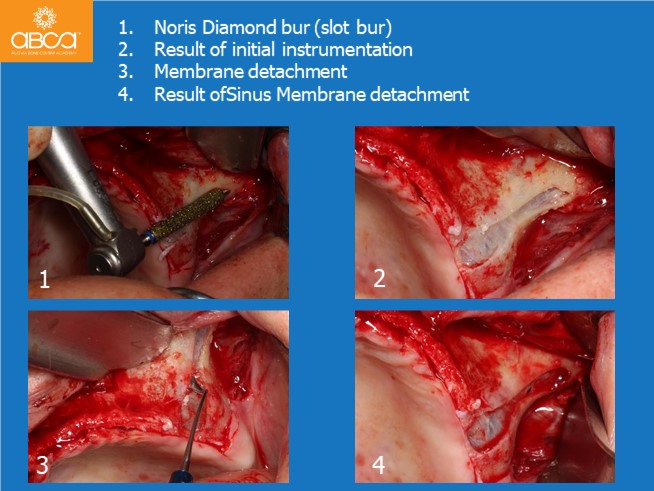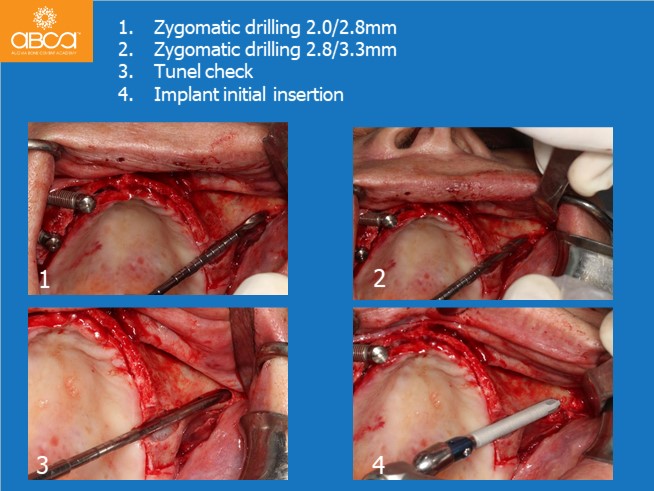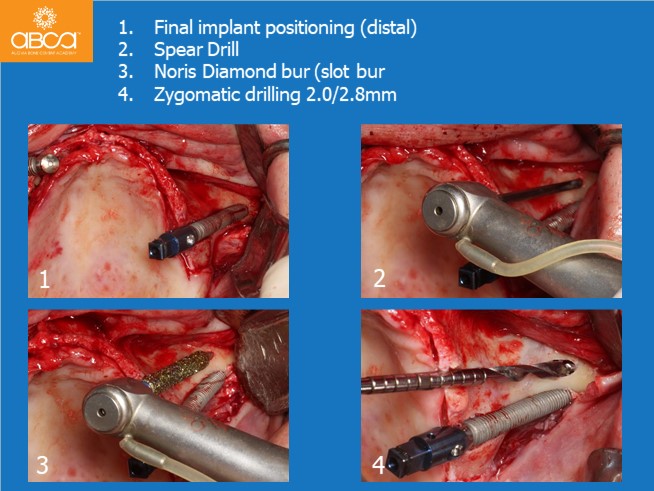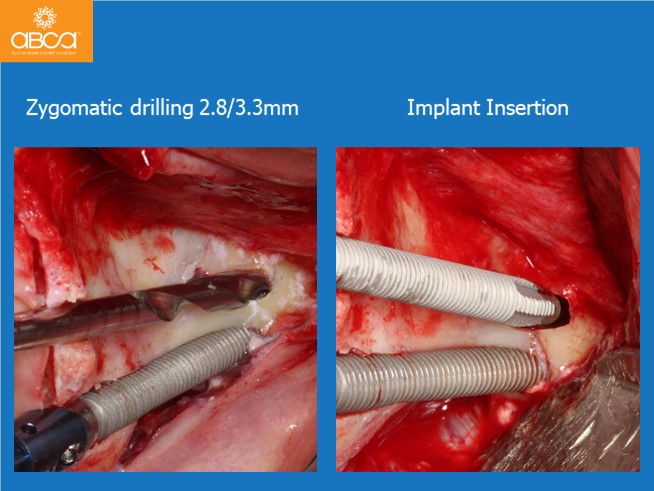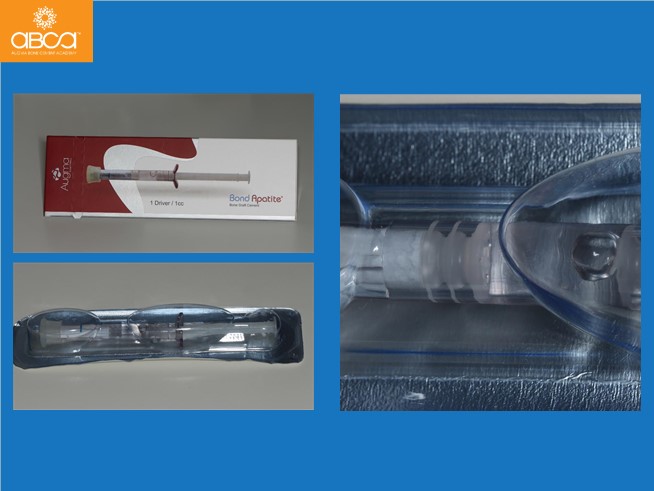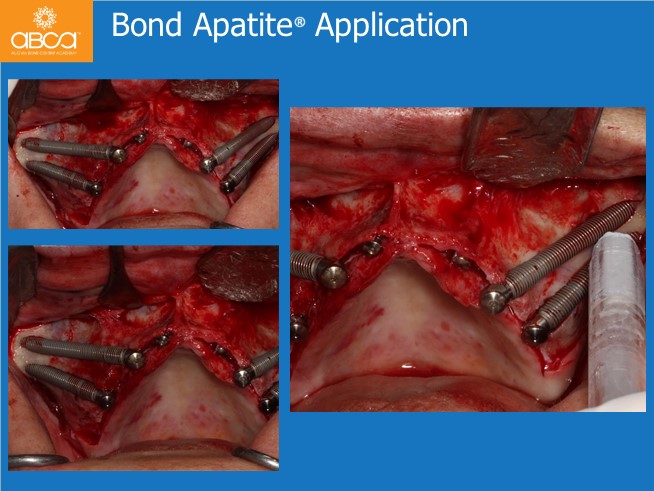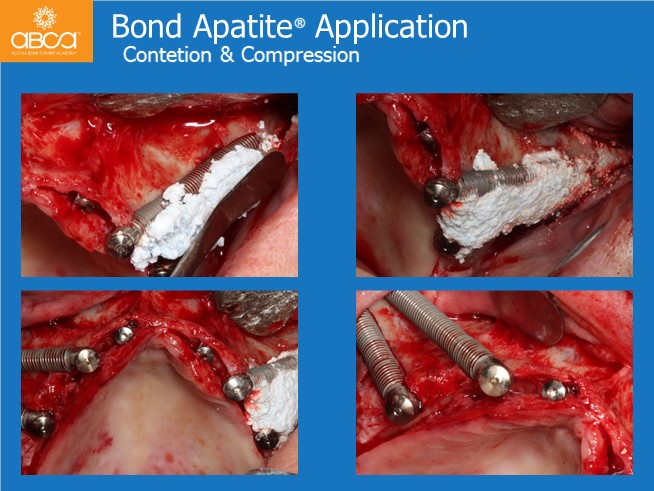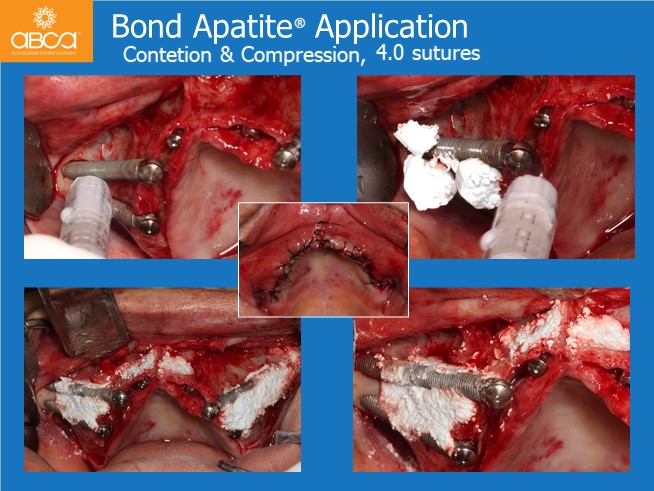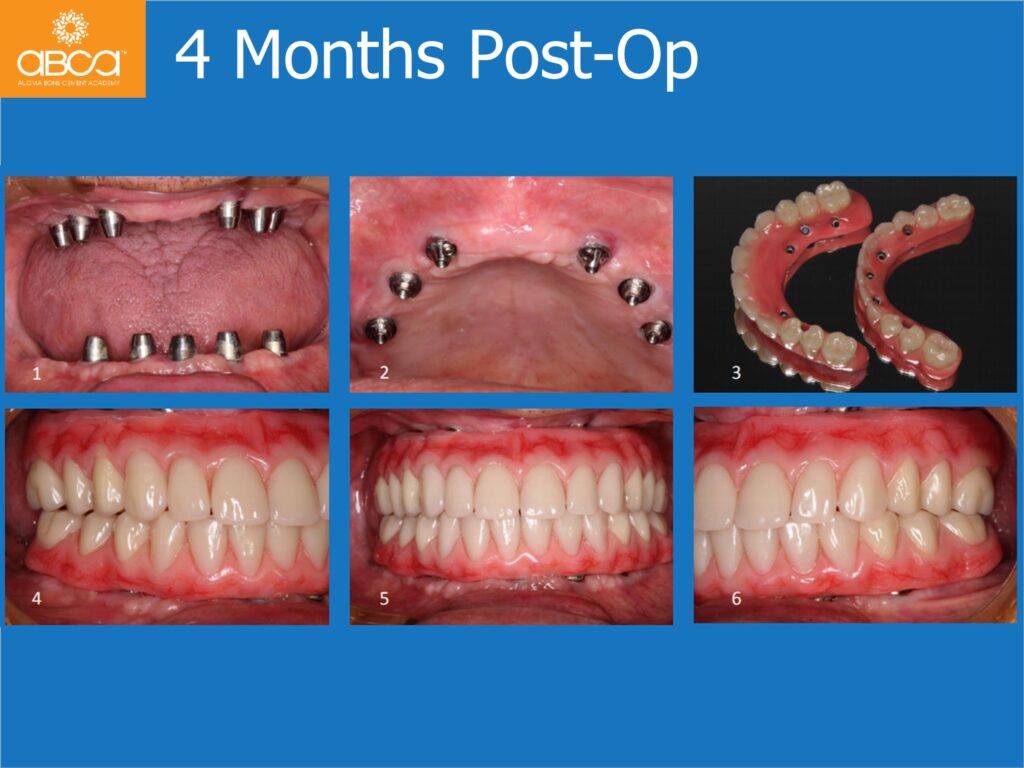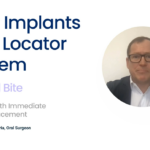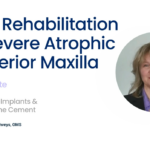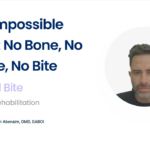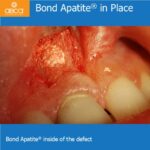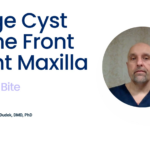Quad -Zygoma using Extra Maxillary Approach in conjunction to Bond Apatite®, reducing trauma and avoiding complications on Full Arch clinical cases.
The oral rehabilitation of total edentulous patients constitutes one of the greatest challenges of current dentistry, especially when planning the treatment of maxillary edentulism, due to the complexity of its execution and the enormous demands by patients regarding aesthetics and phonetics.
Bone atrophy of the maxillary ridge associated with exacerbated pneumatization of the maxillary sinus makes it difficult to install osseointegrated implants in a conventional manner. The solutions for these complex cases of the atrophic maxilla are divided into two large groups: the group that uses tissue reconstruction techniques and the other group that uses only anchoring techniques.
The zygomatic fixations introduced by Prof. Brånemark in 1989 has been used in the rehabilitation of maxillary defects and atrophies, with success rates between 94.2% to 100%.
Through a literature review, the purpose of this clinical case was to relate and describe a new approach that can reduce the trauma and morbility associated with zygomatic fixations. Accidents and complications in zygomatic fixations are a current and very restricted subject, due to being little explored in academic literature and scientific events.
Treatment plan:
·Full arch incision.
·Installation of 6 implants in maxilla.
·2 Anterior Palatine implants.
·4 Zygomatic implants using NORIS extra maxillary approach.
·Addition of bone cement (Augma biomaterials / Bond Apatite®), to increase bone support and contour, avoiding soft tissue dehiscence around zygomatic implants.
